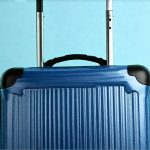Traveling is often envisioned as an exciting escape – a chance for adventure, relaxation, and creating lasting memories. However, for individuals experiencing bladder sensitivity, this seemingly idyllic experience can be fraught with anxiety and logistical challenges. The disruption to routine, unfamiliar environments, and potential difficulties accessing restrooms quickly can transform what should be enjoyable into a source of considerable stress. This isn’t about limiting travel plans; it’s about proactively preparing and adapting strategies to navigate these challenges and reclaim the joy of exploration. Understanding the nuances of bladder sensitivity is crucial, as experiences vary widely from mild urgency to more significant discomfort or even pain.
The good news is that with careful planning and a few practical adjustments, individuals can confidently embark on journeys big or small without letting bladder concerns dictate their experience. This isn’t necessarily about curing the sensitivity – it’s about managing it effectively within the context of travel. It’s about building confidence through preparedness and understanding your own body’s signals. We will explore strategies ranging from pre-trip preparations to on-the-go management techniques, aiming to provide a comprehensive guide for making travel more comfortable and enjoyable for those living with bladder sensitivity.
Pre-Trip Planning & Preparation
The foundation of successful travel with bladder sensitivity lies in meticulous preparation before you even pack your bags. This isn’t about overthinking; it’s about proactively addressing potential issues so they don’t become major disruptions during your trip. A little forethought can save a lot of stress and anxiety down the line.
One key element is route planning. Consider your destination and identify potential restroom stops along the way, especially for long journeys. Apps designed to locate restrooms are invaluable tools – many specifically cater to those with urgent needs, indicating accessibility features and cleanliness ratings. Don’t rely solely on what appears on a map; check reviews or forums for recent updates about restroom availability and condition. Think beyond typical highway rest stops too; consider larger gas stations, shopping centers, and even coffee shops as potential options. Knowing where you can find reliable facilities is paramount. If you are traveling with concerns, it’s wise to read up on how to ease UTI symptoms before your trip.
Beyond route planning, packing strategically is essential. This includes bringing appropriate clothing – loose-fitting garments are generally more comfortable and less restrictive. Pack extra underwear and changes of clothes in case of accidents, providing peace of mind. Consider carrying a small “go bag” containing essentials like wipes, tissues, incontinence pads (if used), and hand sanitizer. Finally, if you regularly use any bladder management products or medications, ensure you have an ample supply for the duration of your trip plus extra, just in case of delays. Remember to check airline regulations regarding liquids if bringing bladder washes or other liquid-based solutions.
On-The-Go Management Strategies
Once you’re traveling, adapting your habits and staying mindful of your body’s signals is critical. This involves more than simply finding restrooms; it requires a proactive approach to managing potential triggers and minimizing discomfort. Staying hydrated is crucial for overall health but can also be tricky with bladder sensitivity. The goal isn’t necessarily less fluid, but rather consistent hydration throughout the day, avoiding large volumes at once. Sipping water regularly is preferable to gulping it down quickly.
Diet plays a significant role too. Certain foods and beverages are known to irritate the bladder – caffeine, alcohol, carbonated drinks, spicy foods, citrus fruits, and artificial sweeteners are common culprits. While you don’t need to eliminate these entirely, be mindful of your consumption, especially before and during travel. Pay attention to how different foods affect your body specifically; everyone reacts differently. Understanding your personal triggers is key. For those noticing a pattern after eating, observing bladder sensitivity can help narrow down the cause.
Finally, don’t hesitate to adjust your itinerary if needed. Travel should be enjoyable, not a source of constant anxiety. If you feel overwhelmed or uncomfortable, take a break, find a quiet place to rest, and reassess your plans. It’s okay to deviate from the schedule – prioritizing your well-being is always the most important thing.
Managing Airplane Travel
Air travel presents unique challenges for those with bladder sensitivity. The confined space, limited access to restrooms (especially during takeoff and landing), and potential turbulence can all contribute to increased anxiety and urgency. Before boarding, inform a flight attendant about your condition; they may be able to offer assistance or provide information about restroom locations.
- Request an aisle seat: This allows for quicker access to the lavatory without disturbing other passengers.
- Avoid excessive fluids before and during the flight: As mentioned earlier, consistent hydration is better than large volumes at once.
- Practice pelvic floor exercises: These can help strengthen bladder control.
- Utilize relaxation techniques: Deep breathing or meditation can help manage anxiety and reduce urgency.
Turbulence can exacerbate symptoms, so staying calm and focused on your breathing is crucial. If you experience significant discomfort, don’t hesitate to ask a flight attendant for assistance. Many airlines are accommodating to passengers with medical needs. Remember that the duration of most flights isn’t excessively long, and focusing on these strategies will help manage any potential issues.
Road Trip Considerations
Road trips offer more control over restroom access than air travel but also come with their own set of challenges. Long stretches of driving can limit options, especially in remote areas. Utilizing those restroom finder apps is even more important here.
- Plan frequent stops: Even if you don’t feel the urge to go, stopping regularly helps prevent urgency from building up.
- Keep a “go bag” readily accessible in the car: This ensures quick access to essential supplies.
- Consider bringing a portable urinal or bedpan (if appropriate): For longer trips, these can provide added security and convenience.
- Be aware of weather conditions: Inclement weather can increase urgency and make finding restrooms more difficult.
Communication is vital on road trips; inform your travel companions about your needs so they can be supportive and understanding. Don’t feel embarrassed to ask for stops. A comfortable journey benefits everyone involved. If you find yourself experiencing a buzzing sensation in bladder while driving, pull over when safe to assess the situation.
Dealing with Anxiety & Stress
Anxiety surrounding bladder sensitivity can often worsen symptoms, creating a vicious cycle. The fear of not finding a restroom or experiencing an accident can lead to increased urgency and discomfort. Addressing this anxiety is therefore a crucial part of managing travel.
- Practice mindfulness techniques: Focusing on the present moment can help reduce worry about future events.
- Prepare for potential scenarios: Having a plan in place for different situations (e.g., traffic delays, restroom closures) can ease anxiety.
- Challenge negative thoughts: Replace anxious thoughts with more realistic and positive ones.
- Consider seeking support from a therapist or counselor: They can provide strategies for managing anxiety and developing coping mechanisms.
Remember that it’s okay to feel anxious – it’s a natural response to uncertainty. The key is to acknowledge your feelings and develop healthy ways to cope with them. Travel should be about creating positive experiences, and addressing anxiety is a vital step towards achieving that goal. If bladder sensitivity flares up due to travel stress, remember these techniques.





















